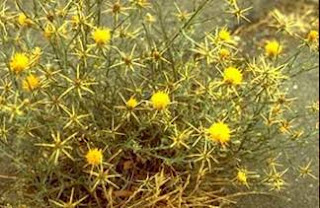This honey is from the Gaspésie, a peninsula running along the south shore of the Lawrence river at the Eastern most tip of Quebéc, Canada. The shore bordering the river is made up of sea cliffs, and the interior of the peninsula is rugged, mountain country containing the Chic-Chocks mountains (a northern continuation of the Appalachian mountains). The interior region, which is mostly covered by coniferous forests, offers some of the most rugged terrain in Quebéc with great hiking, dog-sledding, snowmobiling, downhill skiing, cross-country skiing and snowshoeing. In fact, the January/February 2012 issue of National Geographic Traveler ranks the Gaspésie in the top 10 winter adventure destinations in North America. Most of the population, however, is spread along the coast in small villages of less than 5,000 and for generations have mostly relied on fishing, although agriculture, forestry and tourism also now figure in their economy. The largest city, Gaspé (population around 15,000) is found near the tip of the peninsula.
Maria, Gaspésie, where this honey is from, is on the south shore of the peninsula, along the coast of the Baie des Chaleurs. The area was originally inhabited by the Micmac indians, but around 1775 American Loyalists, and immigrants from Scotland and Ireland, settled there. In 1860 Acadians looking for farmland joined them. The area is mostly made up of farms (cattle and dairy) but also has a sizable honey production. The Rucher des Framboisiers (Raspberry beehives), owned by John Forest and family, has 900 hives and has been producing a variety of honeys in the area since 1977. You can visit "Le petit jardin de l'abeille" (the little bee garden) from June to September to get a tour of their not-so-little gardens, and also get information about honey production. They also have a souvenir shop where you can buy their honey [1059 Dimock Creek, Maria, Québec, Canada, G0C 1Y0].
The honey I have is Star Thistle. I had to google image it to see what kind of a plant it is. It looks like a rugged survivor. Apparently it is considered to be a noxious, invasive weed (part of the knapweed family). Nevertheless, beekeepers prize it for its ability to produce large amounts of quality honey.
Star Thistle honey is a light golden color with a medium body. It has a relatively simple clear taste, not too sweet, with a slightly spicy undertone that tastes a little like cinnamon or allspice. The spiciness is not overpowering so I don't think it would alter the flavor of tea or baked goods much, and might add a little zest. It would also be very nice on hearty buttered toast, or in hot cereal. If you are ever in the Gaspésie, you might consider taking a side trip to Maria to check out The Rucher des Framboisiers' gardens and visitor center. I know I will!




Just found your blog post and really hope that you have been able to make it to Maria and the honey gardens. I discovered it years ago and by now have consumed kilos of their honey - my favourite is the raw (Brut) honey which has a rich buttery flavour. Well worth the trip, not only for the honey but to visit their lovely gardens. Here is their website: http://www.jardindelabeille.com/ahtm/index.htm
ReplyDeleteI'm SO jealous. I have never made it to Maria but know that if I am even remotely close by I'd do everything I could to get there! I get the Ruchers des Framboisiers honey when I visit family in Montreal and have tried (I think) all of their varieties. All are of excellent quality and it is difficult to chose a favorite among them. Thanks for your comment and the website for the honey garden!
ReplyDelete